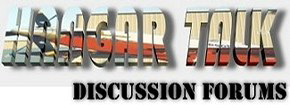A man named Pete Behenna was part of the original crew building up a trashed and stripped carcass into an (eventually) all conquering unlimited air racer -- The airplane that eventually became Rare Bear. Pete apparently kept a camera around during the process and left us a remarkable record of the build. Pete was quite a good shooter, and was using a Rolleiflex, I believe, producing larger format negatives that were a pleasure to work with when I had the opportunity years ago to print a few of them for a Rare Bear project.
These guys really didn't start with much. The shop was pretty minimal, too. This was big time Air Racing in the 1960s...
Neal
These guys really didn't start with much. The shop was pretty minimal, too. This was big time Air Racing in the 1960s...
Neal

Comment